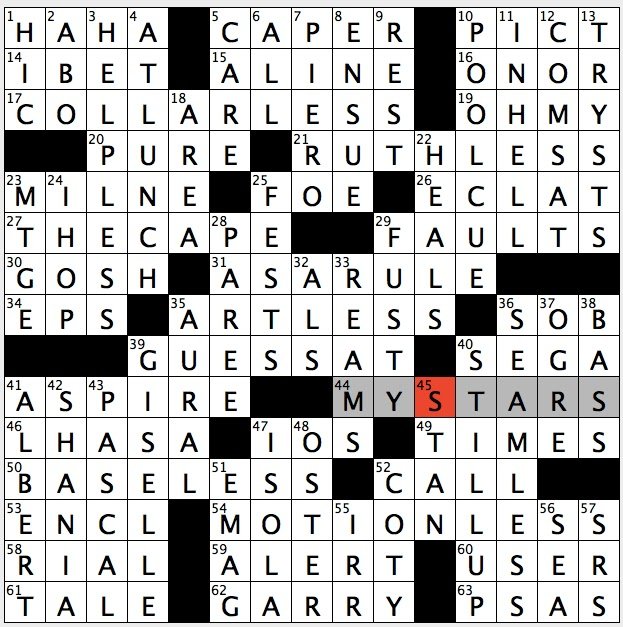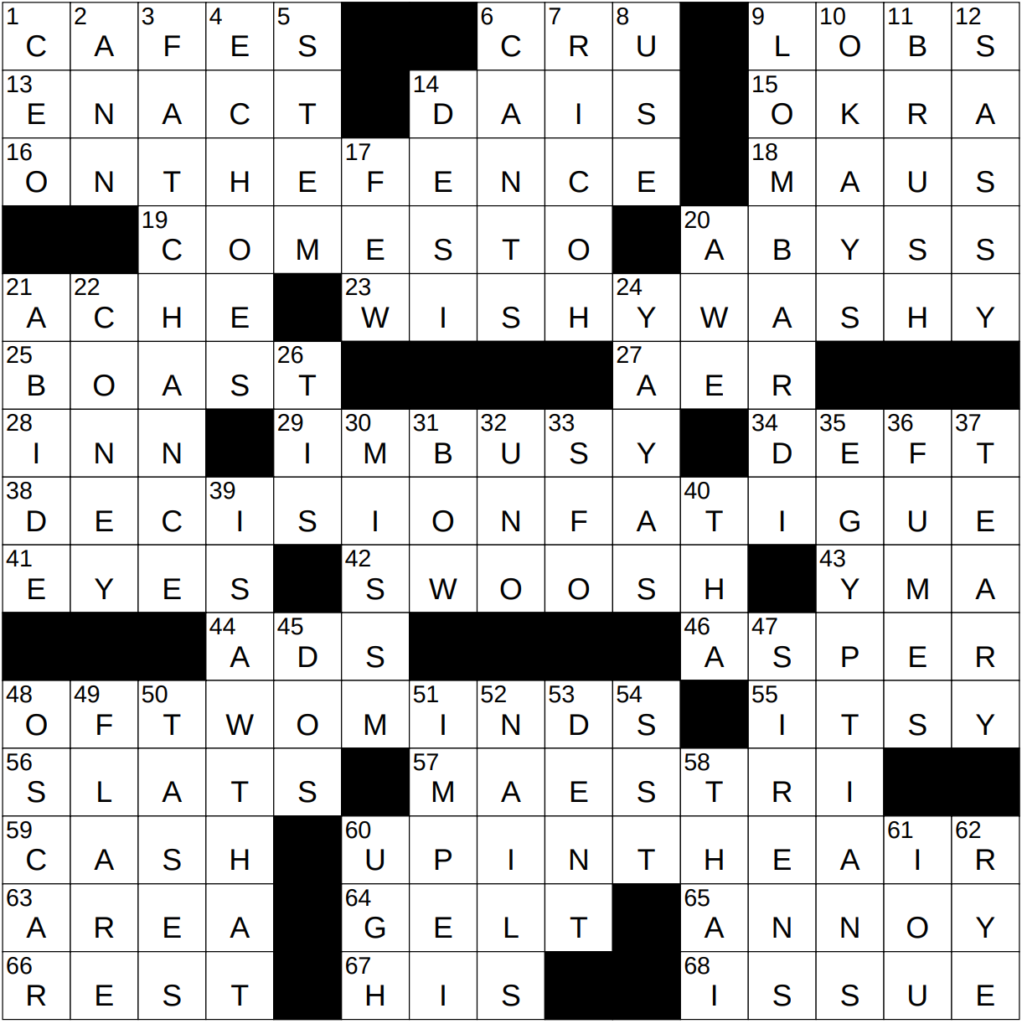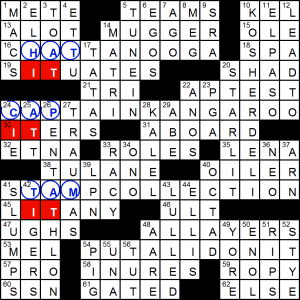Crosswords have been a cherished pastime for decades, offering both a mental challenge and a bit of fun. But there’s something special about the New York Times (NYT) crossword that brings a tear to the eye of even the most seasoned solvers. Today, we’re diving into the world of “a bit teary eyed nyt crossword,” exploring its history, the emotions it evokes, and why it’s such an integral part of many people’s lives.
History of a bit teary eyed NYT Crosswords
The NYT crossword debuted in 1942, a time when the world needed some distraction and solace amidst the chaos of World War II. Since then, it has evolved from a simple puzzle to a cultural icon, known for its wit, cleverness, and occasional ability to bring solvers to tears. From its inception to its current status, the NYT crossword has undergone significant changes, but its core appeal remains the same.

Understanding Crossword Clues
NYT crossword clues are notorious for their clever wordplay and ambiguity. There are several types of clues:
- Straight clues give a direct definition.
- Cryptic clues involve wordplay and misdirection.
- Themed clues tie into a central theme of the puzzle.
Interpreting these clues can be a challenge, but that’s part of the fun. An example of a tricky clue might be “Lead follower? (4),” where the answer is “Zinc” – the element following lead in the periodic table.
Emotional Impact of Crosswords
Why does the NYT crossword evoke such strong emotions? For some, it’s the joy of finally cracking a tough puzzle. For others, it’s the nostalgia tied to memories of solving puzzles with loved ones. Personal stories abound of solvers feeling a bit teary-eyed as they recall these moments. The emotional journey of solving a crossword is a unique experience, often tied to the satisfaction of conquering a mental challenge and the memories associated with it.
Tips for Solving NYT Crosswords
To get better at solving the NYT crossword and avoid feeling “a bit teary eyed NYT crossword” start with the easiest clues. Recognize common themes and patterns in the puzzles. Don’t be afraid to use online resources; websites and apps can offer hints and solutions when you’re stuck. This makes the process more enjoyable and less frustrating. By practicing regularly, you’ll improve your skills and find yourself solving even the toughest puzzles with confidence. Remember, persistence is key, and every puzzle solved is a step towards mastery.

Famous NYT Crossword Puzzles
Some NYT crosswords have reached legendary status due to their difficulty or innovative themes. These puzzles often leave solvers both frustrated and impressed. A notable example is the 1996 “Election Day” puzzle, where the answer to the clue “Lead story in tomorrow’s newspaper (!)” could be either “Clinton Elected” or “Bob Dole Elected,” depending on how you filled in the other answers. This dual-solution puzzle is a testament to the cleverness and creativity that make NYT crosswords so beloved.
Creating Your Own Crossword
Ever thought about creating your own crossword? It’s a rewarding process that starts with a theme and a grid. Experienced constructors recommend starting simple and using tools like Crossword Compiler or online constructors to help with the layout and clues.
Benefits of Solving Crosswords
Solving crosswords isn’t just fun – it’s good for you! It improves cognitive function and enhances vocabulary. Additionally, it can boost mental health by providing a sense of accomplishment and reducing stress. Socially, crosswords can bring people together, fostering a sense of community among enthusiasts. Engaging in this activity regularly sharpens the mind and creates opportunities for social interaction, making it a beneficial hobby for overall well-being.
Challenges of NYT Crosswords
Many solvers face common challenges, such as getting stuck on a clue or misinterpreting a theme. To overcome these, practice is key. Regularly solving puzzles improves your skills and helps you recognize patterns. Stories of perseverance, like that of a solver who spent years mastering the Saturday puzzle, show that persistence pays off.
The Role of Crosswords in Pop Culture
Crosswords hold a significant place in pop culture. They appear in movies, TV shows, and are often referenced by celebrities. A memorable example is the scene in “When Harry Met Sally” where Harry does a crossword while waiting for Sally. Crosswords are more than just puzzles; they’re a cultural phenomenon that transcends generations, connecting people through a shared love of wordplay and mental challenge. # a bit teary eyed NYT crossword

Crossword Competitions
If you’re serious about crosswords, consider competing in a crossword contest. Major competitions, such as the American Crossword Puzzle Tournament, attract top solvers from around the world. These events aren’t just about winning; they celebrate a shared love for crosswords. Participants enjoy the thrill of solving under pressure and the camaraderie among fellow enthusiasts. Whether you’re aiming for the top spot or just looking to have fun, these competitions offer a unique and exciting experience for all crossword lovers.
Crossword Communities
Online forums and local clubs provide a space for crossword enthusiasts to connect. These communities offer support, share tips, and sometimes even collaborate on solving particularly tough puzzles. Being part of a crossword community can enhance your solving experience and provide a sense of belonging. Engaging with others who share your passion not only helps improve your skills but also fosters friendships and a deeper appreciation for the art of crossword puzzles.
Innovations in Crosswords
The world of crosswords is constantly evolving. Digital and interactive crosswords are becoming more popular, offering new ways to engage with the puzzle. Innovations in crossword design and technology are making puzzles more accessible and enjoyable for everyone. # a bit teary eyed NYT crossword

Conclusion
The journey of solving a crossword, especially a challenging NYT puzzle, is filled with ups and downs. It can be frustrating#, exhilarating, and yes, even a bit teary-eyed. But the joy of finally solving that tough clue or completing a tricky grid is unmatched. Each puzzle presents a new challenge, pushing your brain to think creatively and logically. So, keep solving, keep challenging yourself, and most importantly, enjoy the ride. The sense of accomplishment and mental stimulation you gain are well worth the effort. Embrace each puzzle as an opportunity to learn, grow, and have fun.
#a bit teary eyed NYT crossword
Follow for more updates
FAQs
Why do some crossword clues make you emotional?
Crossword clues can evoke emotions because they often trigger memories or represent personal challenges. The satisfaction of solving a difficult clue or puzzle can also lead to a release of emotions.
How can I get better at solving NYT crosswords?
Practice regularly, start with easier puzzles, and use online resources for hints and solutions. Participating in a crossword community can also offer assistance and pointers.
Are there any resources for beginners in crossword solving?
Yes, many websites and apps offer tips and tools for beginners. The NYT crossword website also provides guides and beginner-friendly puzzles.
What are some of the hardest NYT crossword puzzles?
Some of the most challenging puzzles include the “Election Day” puzzle and themed puzzles with ambiguous clues. These puzzles are famous for their clever and tricky clues.
Can solving crosswords improve mental health?
Absolutely! Solving crosswords can improve cognitive function, enhance problem-solving skills, and provide a sense of accomplishment, all of which are beneficial for mental health.


1 thought on “A Bit Teary Eyed NYT Crossword: Solving Strategies”